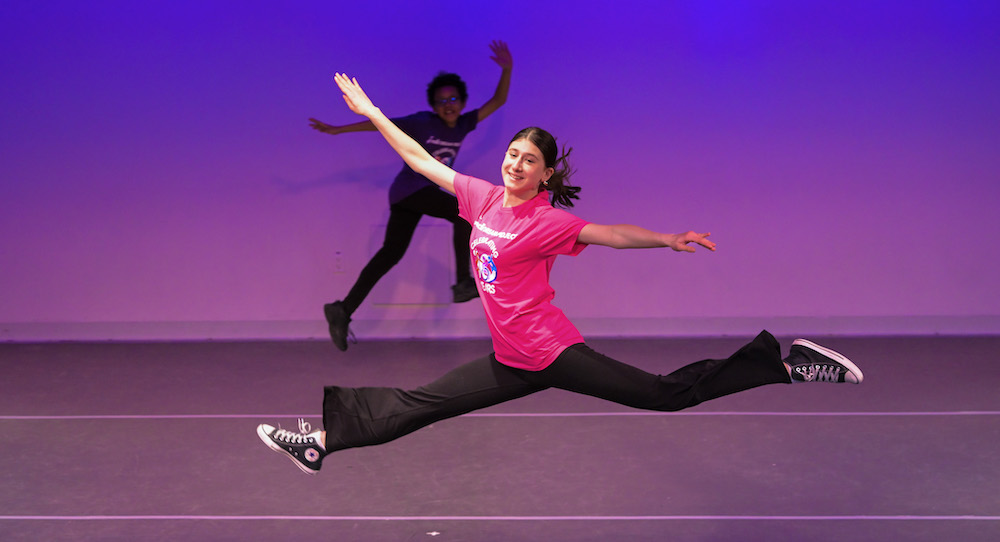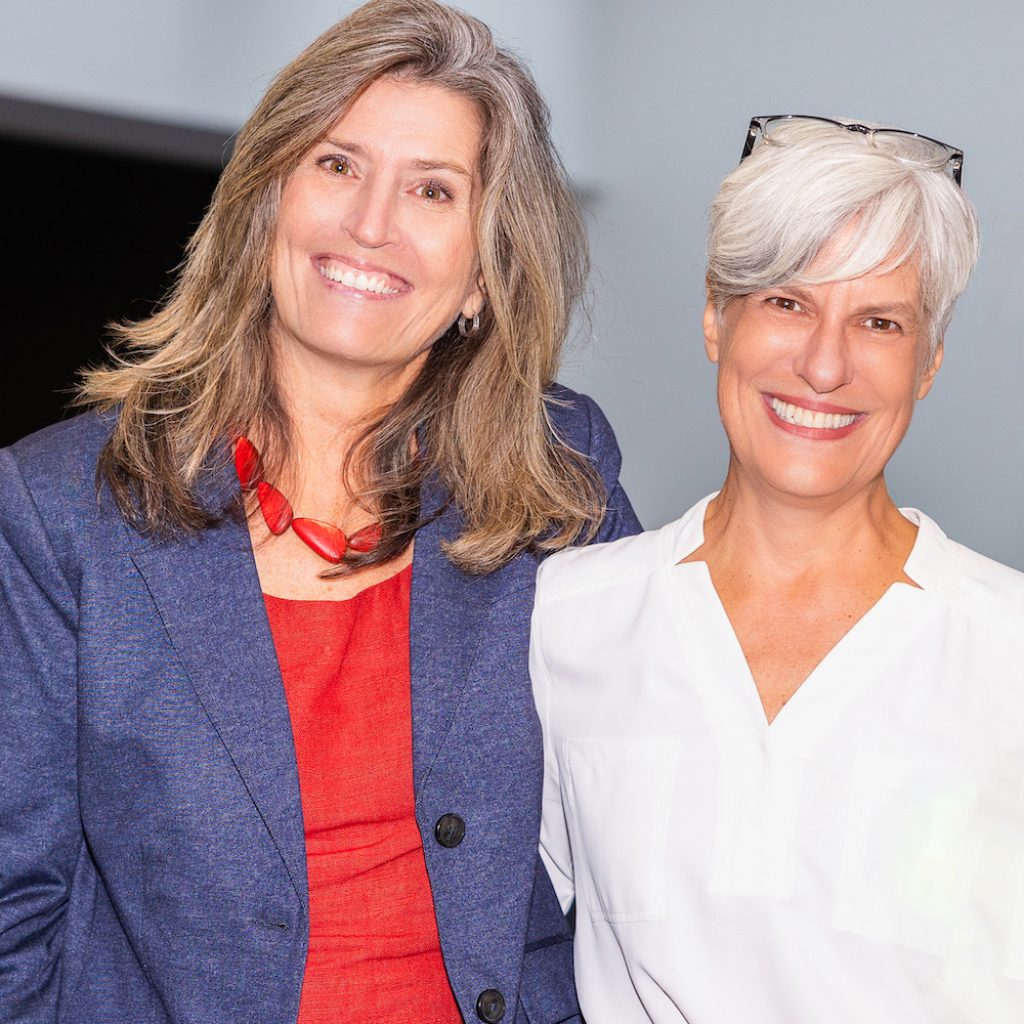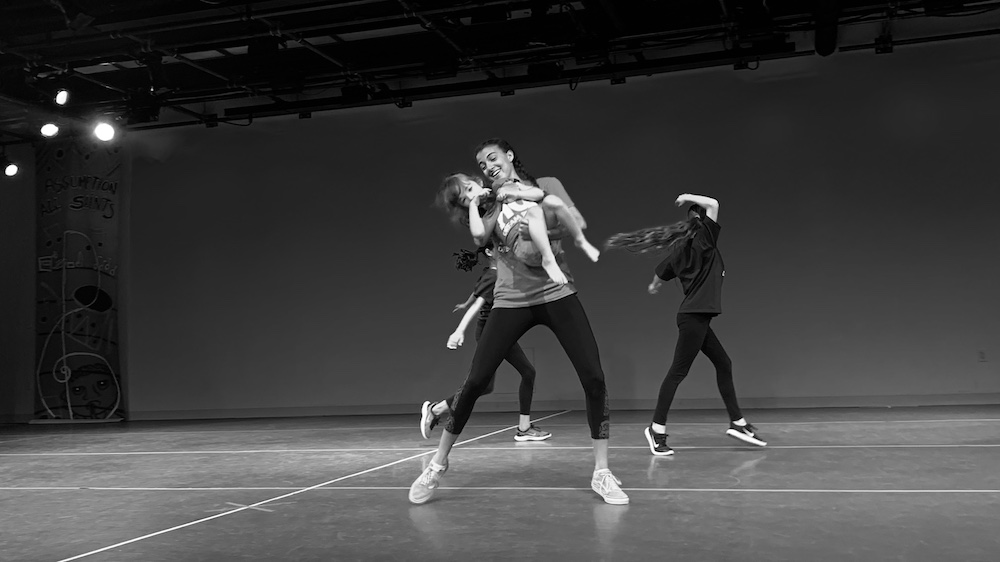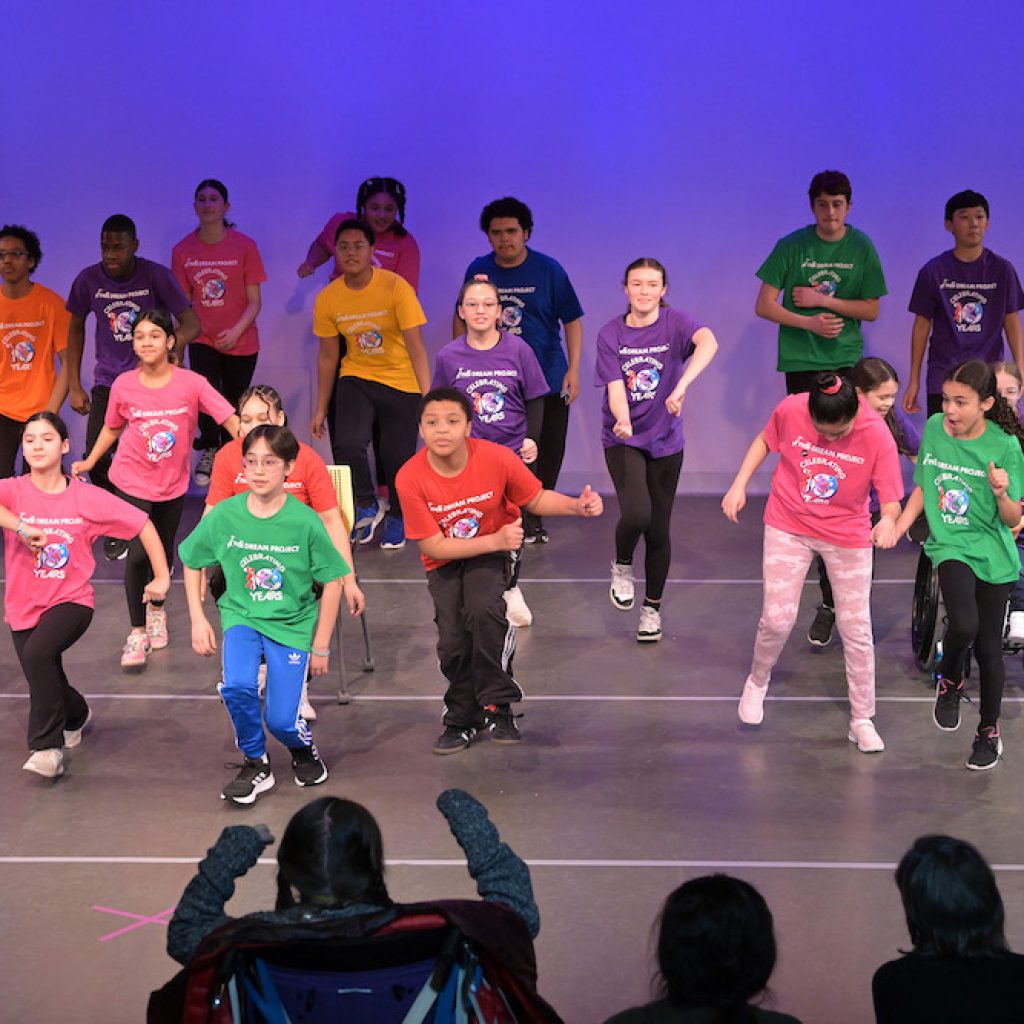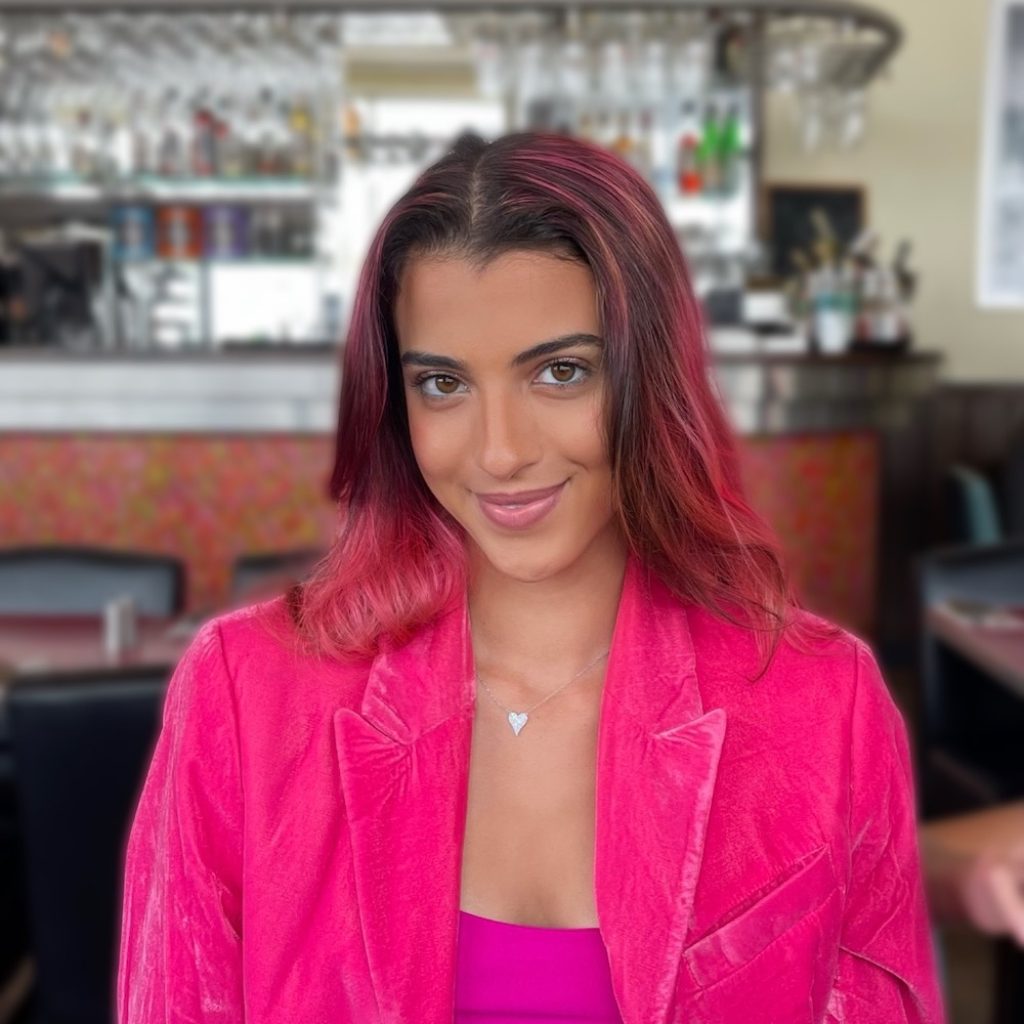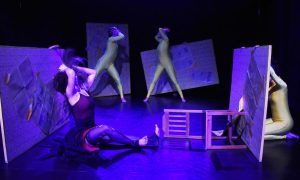Picture this: a dance studio full of children moving and creating. You may not have expected it, but some of them are using wheelchairs and other assistive devices. Led by a skilled teaching artist, all of these children work together – regardless of ability or disability. Such a scene is only the norm within National Dance Institute (NDI)’s DREAM Project: “Dancers Realize Excellence Through Arts and Movement.”
The program pairs disabled and non-disabled students in order to build friendships, promote artistry, foster the skill of collaboration, spark empathy and much more. Such work expands NDI’s mission of inclusive, far-reaching dance education, shining the light of its Founder Jacques d’Amboise through subsequent generations of artists.
Co-founded by NDI Artistic Director Kay Gayner and Pediatric Physical Therapist Dr. Agnes McConlogue Ferro, the program is now in its 10th year. Along with Aileen Barry, NDI’s Senior Director of Education and Outreach, DREAM has also developed a training program to arm dance and music educators, as well as physical therapists, with tools to expand accessibility and inclusivity in their own communities. The program therein has the potential to kindle change far beyond NDI’s NYC home base.
The organization celebrated all of these achievements in an Alumni Homecoming on February 23rd. The event included performances from both current program participants and alumni, those that bloomed from a four-day workshop (February 20-23).
We’ll hear more from both Gayner and Dr. McConlogue Ferro, as well as briefly from Sarafina Belafonte – granddaughter of acclaimed recording artist and advocate Harry Belafonte. Without further ado, here they are!
The NDI DREAM Project stands for ‘Dancers Realize Excellence Through Arts and Movement’ – beautiful! The program also operates by NDI’s ethos that if you have a body, you can dance, no matter disability, race, class. How does the program simultaneously push students toward excellence while also holding space for their individuality and individual needs?
Gayner
“We work toward that goal through several different approaches, which include: uncovering, developing, strengthening and celebrating the unique movements of every child (movement qualities, dynamics, specifics of the way they can move or could be taught to move); creating flexible time within the choreography – so that different partnerships can catch up, fill or draw out the dance phrase within, for example, 16 counts of music; developing dance phrases that highlight and build on movements that a specific dancer can perform beautifully, then translating that movement to others.
Each partnership of children also calls for differentiating teaching and translations of choreography. It’s also key to facilitate collaboration amongst the physical therapist, teaching artist/choreographer, child, caregivers/family, and peer partners. We find out what movements are possible, what’s safe, and where each dancer’s ‘growing edge’ is.”
Dr. McConlogue Ferro
“I came up with the acronym for DREAM as if it were an epiphany! It is the unwavering belief that ‘excellence’ is realized by children who are supported to participate through strengths-based inclusion…something that can only be achieved through embracing the individual in all of their beautiful expressions of self. Supporting individual needs and promoting participation happens very naturally through a dedicated and ‘across-team’ collaboration.
I love the phrasing of ‘holding space for their individuality.’ That is exactly the intent of NDI’s DREAM Project: to recognize, and not only allow but to embrace and highlight the individual and the individual partnerships. Effective collaboration that supports children on a journey of excellence is a dance in and of itself. In that dance, the choreography is sourced by honoring all input and adapting accordingly in the moment.”
Also with respect to program design, able-bodied and disabled students learn and create together. Such an integrated structure comes with both challenges and treasures. How is the program designed and run to nurture both able-bodied and disabled students, and what benefits bloom from that integrated model?
Gayner
“It can be tough to keep everyone engaged in a room that includes dancers with a wide range of diagnoses. There is never ‘one’ answer when dancers have diverse abilities (which results in many translations of each dance phrase). It can also be a challenge to create an environment where children with and without disabilities feel safe (emotional and physical safety are vital).
In order to address those challenges, we focus on, highlight and build on what they can do. We also empower dancers to adapt steps/choreography for their partnership. We make everyone feel safe by inviting them into conversations about how to handle tricky situations, and encourage each other to participate to their fullest ability. We find ways for each partnership to demonstrate mastery and skills. Creating rituals for each class – for example, warm-up, question of the day, goodbye dance – also helps.
As a result, friendships bloom, creativity is unleashed, and participants see each other and connect in new and sometimes unexpected ways. Performances are designed to help audiences see, understand, and ‘learn’ each dancer in the room.”
Dr. McConlogue Ferro
“We provide opportunities that allow for children to ‘learn’ each other. We recognize the importance of every child’s need to relate, to learn about each other without judgment. That’s inherent to true inclusion. The NDI DREAM Project is structured as a scaffolded process where we empower children within their partnerships to have a voice and to be creative. It is, without a doubt, where the magic of this program really takes place.”
Ten years of the program – congratulations! What are some of your favorite experiences, anecdotes and student success stories that have come out of the program?
Gayner
“I love the choreography that comes out of these workshops. But even more, I love the way the children fall in love with each other, and how the friendships endure and deepen over the years. Here are a few examples, in their own words”
- Alexa: ‘Today, I want to take a moment to thank a special person who has made my NDI DREAM journey over the years a real dream…it has been an honor to work and dance side by side, brow by brow, wheel by wheel, knee by knee and heart by heart with my friend.’
- Morgan: ‘DREAM makes it possible for everyone to do what they can, and make it happen in a fun and entertaining way.’
- Daniel: ‘Isaac’s energy must have converted my nervous energy into sheer excitement, and suddenly I was on the verge of jumping up and down! The show went great, and since then, my confidence has grown exponentially. Anytime me and Isaac partner up, we are in near perfect sync.’
Dr. McConlogue Ferro
“There are so many! Ironically, few of my favorite moments are about dancing, per-se; all of them seem to be more about individual discovery, empowerment, relating to each other and the joy that comes from all of that. I guess because we just finished our most recent DREAM Project (kicking off the celebration of our 10th Year Anniversary), I have to say that the highlight and the phrase that keeps running through my head is: ‘SHE DID THE WHOLE SHOW!’ I am thinking of a young lady who started a year-and-a-half ago. This was her third NDI DREAM Project.
During our initial meeting, her family did not expect her to be able to participate throughout the class, and certainly not throughout the whole performance. At first, she didn’t. She did, however, do a small section of the first performance, a little more in the second….and the whole show in the third! I [get] choked up. Hers is not the only story of ‘beyond expectations,’ and I don’t believe it will be the last. Yet, right now I am taking the time to rejoice with – and for — her!”
We’re approaching the third anniversary of Jacques d’Amboise‘s passing. How do you see the DREAM Project carrying on in his vision and legacy, and the mission of the organization he founded? How do you see this program growing into the future to continue doing so, and doing so perhaps even more significantly and meaningfully?
Gayner
“The DREAM Project is a natural extension of Jacques and NDI’s core belief that every child can dance. We hope to expand our programming by offering more workshops here in New York, as well as continue to train teaching artists in inclusion ‘done right.’ That’s all in the hope that the DREAM model can inspire arts educators all over the globe to start programs of their own.”
Dr. McConlogue Ferro
“I miss him! I miss how he would come and sit and smile at each and every child. He would never hesitate in interacting with anyone, nor in raising the bar ever so slightly beyond what we would have thought possible. He had a unique ability to see artistry and to truly revere it – and he saw that in every child. That is his legacy. What an incredible honor it is to carry it forward.
I believe that we will continue to expand the NDI DREAM Project, beyond filling the studio for each DREAM, by increasing awareness of the clearly identified need for (and the positive impact of) inclusive dance on all who participate and observe, and that knowledge is the foundation of inclusion. That foundation is knowledge of the child, of best practice and of the art of collaboration. This program is built upon embracing individualized inclusion for all children. It is our dream to expand that foundation to communities far and wide.”
Please share anything else that you’d like our readers to know.
Dr. McConlogue Ferro
“I would love for readers to recognize that community-based inclusive dance impacts everyone. That impact goes beyond the walls of dance studios. We have seen how it transforms children and families to be empowered agents-of-change. Dance is powerful. Dance is community-building. Dance is a bridge that fosters connections to others. We truly need that to be experienced and learned at a young age, now more than ever.”
A closing word from Sarafina Belafonte
“DREAM led to one of my most beloved friendships, with my partner Esmé. It’s brought wonderful dinners, FaceTime calls and a bracelet I cherish with the words ‘Dance Team Esmé’ engraved in her handwriting. I also found an incredible friendship with her mom, Hillary, whose strength, resilience and openness are awe-inspiring. She let me ask questions about Esmé’s conditions, and helped guide me in dancing with her. Most importantly, she trusted me with being her daughter’s dance partner and friend – something for which I am eternally grateful.
DREAM is part of the reason I wanted to study neuroscience. DREAM is centered around the idea of translations; Kay and Aggie would give us choreography to learn, and each person would adapt a translation that fit their bodies. Movement and communication look different for each of us – and DREAM has the incredible capability of making everyone feel at home, understood and celebrated. Studying neuroscience is very similar; our brains use the same cells (neurons) and communication methods (electrochemical signals), but in various translations that make us who we uniquely are. I will cherish every moment I’ve had with DREAM, and I look forward to another 10 years!”
For more information on NDI Dream Project, visit nationaldance.org/dancers-with-disabilities.
By Kathryn Boland of Dance Informa.


